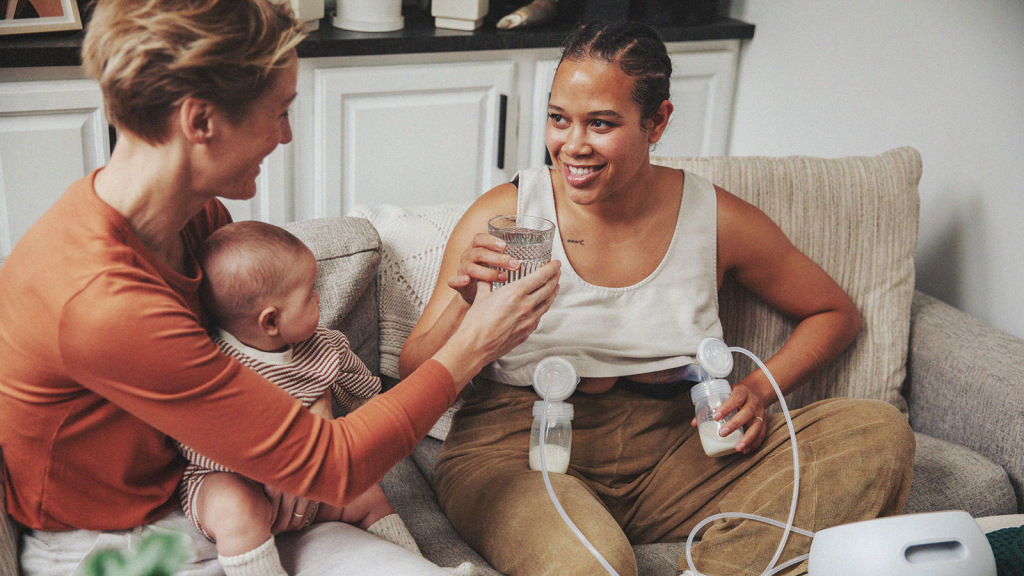Pump and Dump Breastfeeding Guidelines
Lactating parents sometimes ingest substances that could be harmful to their child. In an effort to avoid feeding a baby breast milk that contains trace amounts of these substances, the “pump and dump” method was developed. Pumping and dumping entails discarding your expressed breast milk after consuming alcohol or drugs… but is it really necessary?
Lactation 101
To understand the pump and dump logic and decide if it could be useful for you, it’s important to know that lactation is a supply and demand system, meaning the more milk your body thinks your baby needs, the more it will make. For many, it’s not an option to simply take a break from breastfeeding if they’re on short-term medication, or if they over imbibed alcohol. Simply put, lactating parents need some way to maintain their breast milk supply even while temporarily unable to breastfeed, and that’s how the pump and dump technique came to be. Furthermore, when nursing parents don’t express their breast milk, they can experience swelling, soreness, and even mastitis. So pumping and dumping can help maintain milk production and avoid the health issues that accompany unexpressed milk.
Pumping breast milk after consuming certain substances doesn’t actually reduce the amount of those substances in your milk, and best practices greatly depend on which substance you’re using. So consider these your pump and dump breastfeeding rules:
Pumping and Dumping Alcohol
According to the CDC, “Expressing or pumping milk after drinking alcohol, and then discarding it (“pumping and dumping”), does NOT reduce the amount of alcohol present in the mother’s milk more quickly.” Rather, as blood alcohol level falls over time, the level of alcohol in breast milk will decrease, too.
One standard drink per day, consumed at least two hours prior to breastfeeding, is not known to cause harm to infants. If you drink in excess of that, or you drink within two hours of your usual feeding schedule, you may choose to pump and dump in order to ease your own physical comfort, and feed your baby previously expressed milk from your milk storage. But to be clear, pumping and dumping does not get rid of the alcohol in your system: blood alcohol levels directly correlate with breast milk alcohol levels.
Pumping and Dumping Drugs, Including OTC and Prescription Medications
Always ask your doctor or International Board Certified Lactation Consultant if it’s safe to consume any medication or herbal supplement when breastfeeding—even over-the-counter medicine. Opiates, found in many prescription painkillers, can be fatal to infants. If you’re prescribed any medication (or are taking other substances), tell your doctor if you are breastfeeding, and ask whether there are alternatives that would be safer for your baby. You can also ask if you can pump and dump while you’re taking the drug and resume breastfeeding after you stop taking the drug—but only choose this option with a doctor’s guidance. Marijuana (or cannabis) is another drug to avoid while breastfeeding. Cannabis remains in the body longer than most other drugs, and it can take weeks to months of abstinence to fully exit your system. If you have any concerns about the lingering effects of marijuana or any other recreational drug taken while breastfeeding (or shortly before starting to breastfeed), it’s essential that you have an honest discussion with your doctor or IBCLC. They can help you make the right choices for your baby.
In short, when you pump and dump milk, it doesn’t remove substances from your breastmilk and should only be used if you want to stick to your pumping schedule to maintain milk supply, or if you need to relieve full breasts for your own comfort. There’s absolutely no shame in asking your doctor or IBCLC for specific guidance about how and when to pump and dump. Together, you can figure out a lifestyle solution that works for you.



